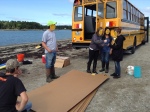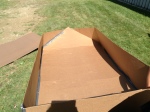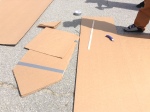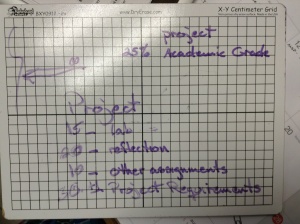When I was in college, the end of the semester always dragged. I couldn’t wait for it to just be over so I could start the new semester, take the new classes, and just move forward. I hated the wrapping up of the current semester: turning in the last papers, taking the last exam, and realizing I only used a quarter of the spiral notebook for a class. Before the semester actually ended, I was already thinking about the new classes. I would pour over my new schedule and happily shop for new notebooks and supplies.
Apparently I still have this character flaw. I just want to be done with this year. I hate the end of year wrap up, but I do get excited about next year. I want to start planning now!
Today we got our (hopefully final) master schedule, so we know what we will be teaching. Mine doesn’t have any surprises, but I do have some new classes. Next year I will be teaching Marine Pathways Algebra 1 and Marine Pathways Basic Math. The level of math is not new, but the marine focus is. The classes are also supposed to be project based as much as possible. I can’t wait to throw out the textbook (so to speak) and find ways to make the classes both marine and student centered.
My other new class is 7th grade math. Although I am not excited about traveling to the elementary school (half mile) every day, I think it will be interesting to work in a different environment. Our elementary school is leaping into proficiency based and project based learning, and combined grade levels, all at once. I think the teachers will be a little stressed out as they work out the kinks in their new systems. My 7th graders will be the ones who are struggling with math, so again it will need to be hands on and project based. Since I am not as familiar with the 7th grade standards, I will have to do a lot of work this summer to get ready.
I have already started to make lists of things I need to do. One of the big ideas I need to reflect on is how skills, fluency, and process need to be balanced in a math class. That one is going to take some time, research, and deep thought. I also want to reconsider classroom routines; mine could certainly use some reflection and updating. I hope to get as many summative assessments as possible done this summer which means being very clear on what students need to know. And I need to develop ideas for projects and tasks, including identifying the standards they meet and the standards that can’t be met that way.
Of course, there’s always homework. This is the end of my 5th year and I still haven’t found a good way to manage homework, especially for students who struggle with getting it done. I really need to dig in to what I want homework to accomplish. Is it practice, a chance to extend learning, review, preview, or just spiraling work? I think once I pin down what I want to accomplish it will be easier to decide how.
I also need to start thinking about how to interface with the elementary school. How many of their meetings should I attend? Who will be my go to person there? What supplies will I have access to? Can I get a copy of their textbook (even though I probably won’t use it)?
I can really feel next year tugging me forward and the end of this year anchoring me in place. Meh. Only 13 days until I can pull the anchor and go.









